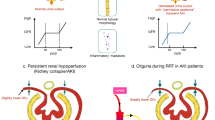Abstract
Introduction: Endothelin (ET) and nitric oxide (NO) act as opponents in the regulation of the hepatic microcirculation. During ischemia/reperfusion (I/R) ET levels are increased, whereas no rise in NO levels is observed. This imbalance may be responsible for microcirculatory disturbances. The aim of this study was to restore the delicate ET/NO balance to maintain the integrity of the hepatic microcirculation and to reduce I/R injury. Methods: Ischemia was induced by crossclamping of the hepatoduodenal ligament for 30 min with portal decompression using a splenocaval shunt (56 Wistar rats, 200–250 g). Sham operation, ischemia and treatment groups with the endothelin receptor antagonist (ERA) bosentan (1 mg/kg body weight i.v.) and the NO donor l-arginine (400 mg/kg body weight i.v.) were performed. For assessment of the microcirculation, sinusoidal perfusion rate, diameters of sinusoids and postsinusoidal venules, leukocyte endothelium interactions and velocity of free-flowing leukocytes were investigated by means of in vivo microscopy 30–90 min after reperfusion. Local hepatic tissue pO2 was measured prior to ischemia, 30 min and 60 min after reperfusion and aspartate aminotransferase (AST)/alanine aminotransferase (ALT) levels were investigated 2 h and 6 h after reperfusion. Results: After ischemia, sinusoidal and venular diameters were reduced to 76% and 85%, respectively, of sham operation group values (P<0.05), but were maintained at baseline in ERA (98/102%) and NO (102/105%) groups (P<0.05). Increased postischemic leukocyte sticking in sinusoids (144%) and venules (435%) was reduced by therapy to 110/253% (ERA) and 111/ 324% (NO), respectively (P<0.05). Perfusion rate was increased to 93% and 94% compared with 82% in the ischemia group (P<0.05). Concomitant with the improved microcirculation in therapy groups, local hepatic tissue pO2 was improved 30 min after reperfusion in the ERA (11.0 mmHg) and the l-arginine group (11.5 mmHg) relative to the ischemic group (6.9 mmHg) (P<0.05). In addition, postischemic AST/ALT increase was reduced by therapy. Conclusion: Our results indicate that maintenance of ET/NO balance by blocking ET receptors, as well as providing a NO donor, protects the liver microcirculation and reduces hepatic I/R injury.
Similar content being viewed by others
Author information
Authors and Affiliations
Additional information
Received: 14 August 1998 Accepted: 13 October 1998
Rights and permissions
About this article
Cite this article
Scommotau, S., Uhlmann, D., Löffler, BM. et al. Involvement of endothelin/ nitric oxide balance in hepatic ischemia/ reperfusion injury. Langenbeck's Arch Surg 384, 65–70 (1999). https://doi.org/10.1007/s004230050176
Issue Date:
DOI: https://doi.org/10.1007/s004230050176




